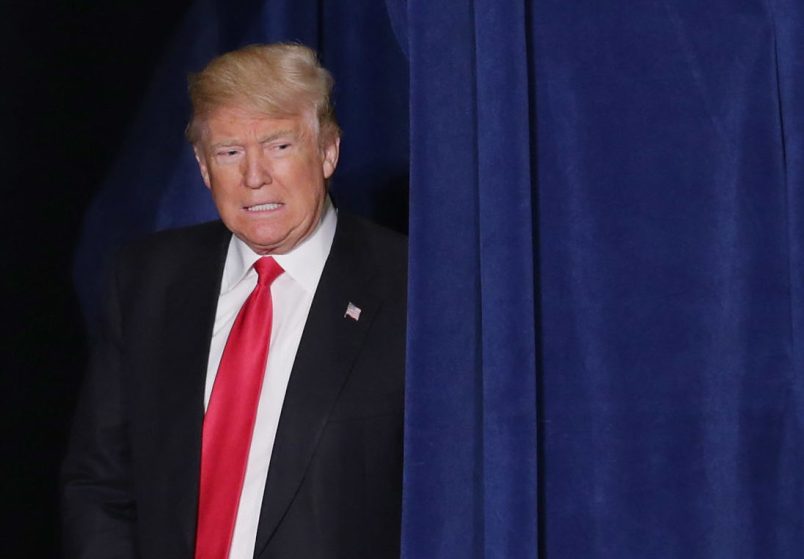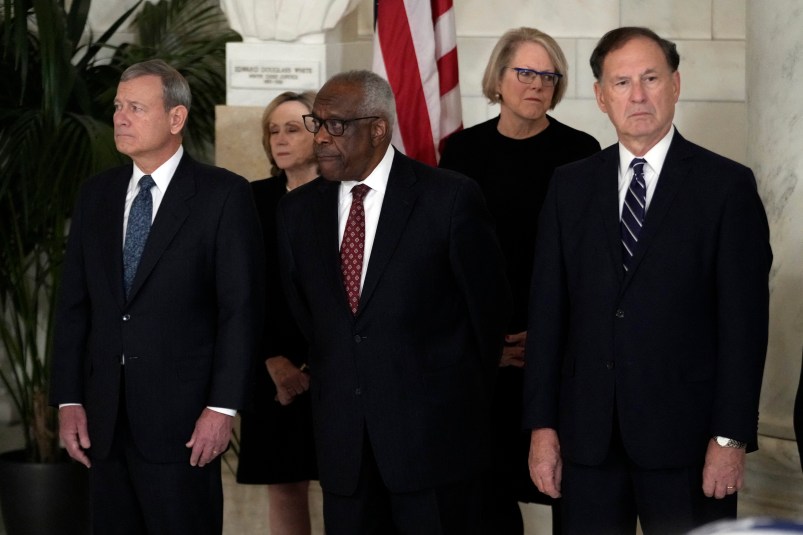President Trump is insisting on meeting Vladimir Putin one on one, without any aides present, according to CNN. Trump appears to have a special affinity for private meetings with Putin. When the two met last year in Hamburg, Germany they met first with only Rex Tillerson present on the U.S. side. Trump and Putin later had an unscheduled meeting in which Trump met for roughly an hour with Putin and Putin’s English language translator. In other words, in the second meeting, no one from the U.S. was privy to what was discussed. The United States has no record or knowledge of what was discussed, other than what President Trump may have chosen to share after the fact.
In Helsinki, it appears (if I’m reading the CNN story right) that the two men will meet with translators, presumably one from each country. This is a little different. There would be one more person from the U.S. government: the translator. But a translator cannot be a notetaker in the same setting. So even though a U.S. translator would have some recollection of what was discussed, there would be no formal or detailed record.
Most expressed concerns about this frame those concerns around an unsophisticated Trump being coddled or buttered up by Putin into agreeing to something he shouldn’t. But this has always struck me as a polite way to hinting at a more obvious and sinister concern: why Trump apparently needs to keep secret from his own government what he discusses or agrees to with Putin. It is very hard for me to imagine an innocent explanation for this.
Government bureaucracies thrive on information and record-keeping. There are very good reasons for this. But it goes beyond the good reasons. It’s what powerful and complex states do, just like militaries plan for wars and intelligence agencies look to uncover secrets. Governments produce and keep records. You’ll remember that the day after President Trump fired James Comey he brought Russian Foreign Minister Lavrov and Ambassador Kislyak into the Oval Office. In that meeting, he both shared top-secret U.S. intelligence with the two men and also trashed Comey as a “nutjob” who he fired to reduce pressure from the Russia probe. We know this because the U.S. government kept a record of the meeting (which is entirely normal), parts of which were eventually leaked.
That was an embarrassment for Trump. So it’s not altogether surprising he’d want to avoid such a record. More revealing to me is that he wants none of his own aides to witness the encounter either. Trump chooses his own top aides. He may not want transcripts or memos about his conversation circulating through various U.S. national security agencies (Pentagon, State, CIA, et al.). But it’s much less clear to me why he wouldn’t want even his closest and most trusted aides, people he appoints with no confirmation and who work at his pleasure, to know what was discussed. That is highly suspicious.
Which brings me to a related, broader point.
I’ve written several times that Trump is an autocrat without an autocracy. He is, to bend the accustomed turn of phrase a bit, a round peg in a square hole. He’s acting. He’s saying things. He’s trying to do things. But he doesn’t quite seat into or engage with the machinery of government in a lot of cases.
Let me give you a particular example of this.
President Trump routinely bashes and threatens core U.S. treaty alliances in Europe and Asia. NATO is the most important of these. NATO isn’t just important. It’s deeply embedded into the culture and training of the U.S. military, its senior officer corps, and the rest of the U.S. national security apparatus. But while Trump is tweeting threats and making scenes at summits, something else is going on. The actual direction and orders coming out of the Pentagon and national security apparatus have if anything moderately stiffened the posture of NATO and the U.S. military in Eastern Europe. Beyond what we see in public, I’ve spoken to people who are privy to these channels. And this is largely the case. The actual orders are not changing.
This must be part of the reason that people like Defense Secretary Mattis and others just keep moving forward despite all the things we’re seeing. The actual orders, the troop strength numbers, posture, and readiness is moving independently from what we’re hearing from Trump. As I noted, if anything they are moving slightly in the opposite direction.
What I take from this is not that the talk is for show. I think it is that Trump is chaotic and disorganized and doesn’t think in bureaucratic terms. On a different front, he also clearly wants to fire Robert Mueller. But he has not yet been quite willing or able to do so or find anyone who will follow an order to do it. With the national security aides, in most cases, they’re not really on board with the sort of dramatic changes Trump seems to want.
This does not mean I think these people are covertly part of the ‘resistance’ or defying him. I think it’s more like they will continue operating within the established channels of U.S. national security policy until they get specific orders to the contrary. When they get those, they’ll follow them. An example of this came when President Trump, apparently to the great surprise of everyone but Kim Jong-un, announced the end of U.S. military exercises with South Korea.
In other words, you have Trump as a chaotic and impulsive player at the center of the national security apparatus who is nonetheless not entirely plugged into it. But over time, he does break things. He does make changes. He changed facts on the ground in South Korea. He has apparently begun a process at the Pentagon of analyzing how to withdraw the U.S. military from Germany. He has been able to move more quickly and dramatically with tariff policy, an area where he has much less bureaucracy to deal with, many fewer institutional stakeholders within the U.S. government to be concerned about. But those moves on trade policy now seem to be seeping into the national security realm, putting treaty alliances under extreme strain not directly but by upsetting trade relationships.
This lack of connection between Trump and his own government – sometimes partly for show but largely not – is the best and clearest explanation of why he wants and will meet with Putin and discuss issues with him outside of earshot of that government. Trump is an independent actor from the government he runs. He wants to keep his discussions and deals with Vladimir Putin secret from that government.







